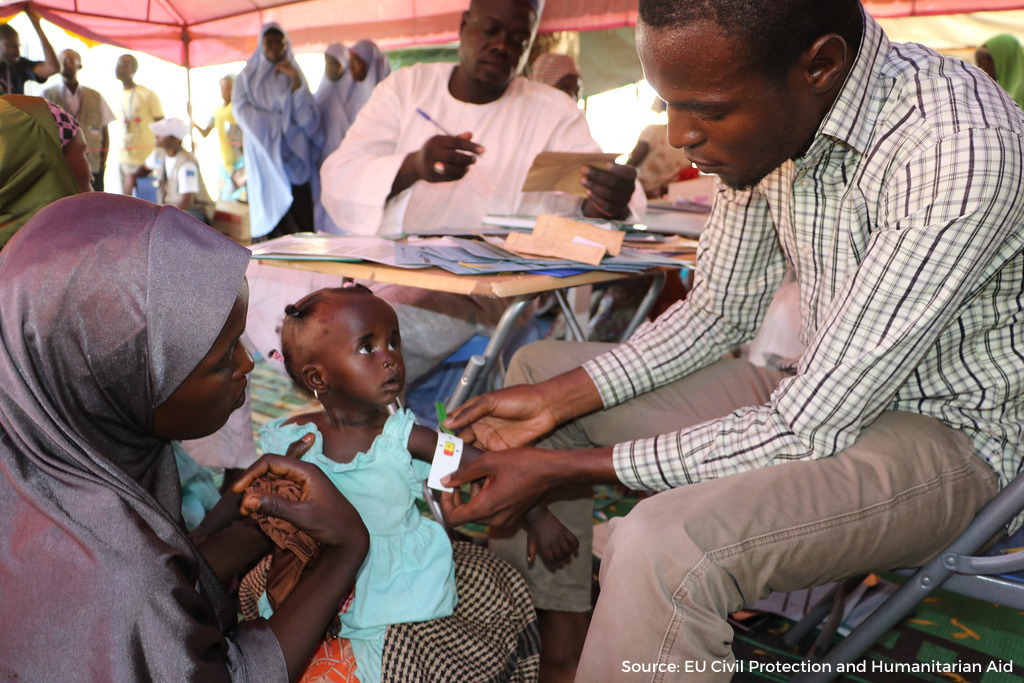The Latest Evidence on the Simplified Protocols for Wasting

Background
- Traditionally, children who had wasting (also called acute malnutrition) were treated in hospitals.
- Hospital stays were inefficient, expensive, and forced caregivers to leave behind work and other responsibilities.
- This inefficiency meant very few kids received treatment, which increased the risk of illness and death from malnutrition.
- Starting in the early 2000s, international aid organizations and national health systems began treating wasted kids at home using packaged, nutrient-dense food called Ready-to-use Therapeutic Food (RUTF). These programs are called Community-Based Management of Acute Malnutrition (CMAM).
- CMAM programs are more cost-effective than hospitalization and allow more children to get the treatment they need, but the program quality varies and we still aren’t reaching nearly enough children.
- Inefficiencies in the CMAM model include an arbitrary cutoff between moderate and severe cases which often leads to fragmented treatment, difficulty in reaching Health Facilities on a weekly basis to receive treatment, etc.
- Today, less than 25% of even severely wasted children receive the treatment they need.

Finding new and better ways to treat wasted children
- Researchers have recently started looking for new ways to simplify and improve CMAM programs so that they can reach and save more kids.
- Most ideas for “simplified CMAM protocols” include:
- Treating all wasted kids with the same product (integrated protocol). In the past, organizations gave different therapeutic foods to kids who were more severely malnourished (SAM) compared to kids who were only moderately malnourished (MAM). New research is showing that it is not only possible to treat all malnourished kids with the same product, but that this can cut down on treatment costs by making supply chains more efficient.
- Training and empowering parents to screen their own children for wasting at home for malnutrition rather than leaving screening up to healthcare workers who see kids a lot less often.
- Changing to an easier way to screen for malnutrition (mid upper arm circumference or MUAC) that relies less on fancy equipment which is expensive and harder to use, transport, and maintain (such as the scale and height board needed to measure weight-for-height z score, another way of diagnosing wasting).
- Simplifying the dosage of therapeutic food so that it is easier for low-literacy parents and healthcare workers to administer.
- Reducing the amount of therapeutic food prescribed. New research is showing that children might need less therapeutic food to recover than they have traditionally been given. Safely reducing doses can help each shipment of therapeutic food go further and reach more children.
Recent Studies/Evidence supporting Simplified CMAM protocols
- The Optimising treatment for acute Malnutrition (OptiMA) proof of concept study in Burkina Faso trained mothers to use a simpler way to screen their children for malnutrition and treated all kids – regardless of how malnourished they were – with the same product at a gradually reduced dose. The recovery rate for even the most severely malnourished children was 86.3% – higher than the global standard for successful recovery (greater than 75%.)
- A recent systematic review found that caregivers can effectively detect severe malnutrition in their kids. On average, caregivers noticed that their children were malnourished earlier and more often than health workers did, which meant children were able to get treatment sooner.
- A randomized controlled trial in Sierra Leone found that treating all malnourished kids with the same product and using the simpler way of screening for malnutrition an integrated protocol had higher coverage and a higher recovery rate compared to a standard protocol
- The Combined Protocol for Acute Malnutrition Study (ComPAS) tested how treating all malnourished kids with the same product (a combined protocol for MAM and SAM) compared to the traditional way of treating kids. The study found no difference in recovery rate. The combined protocol was cheaper and just as effective.
Main takeaways
- There are a number of ways to simplify the way kids are treated for severe malnutrition.
- This simplification could potentially allow more kids to access high-quality programs which would, in turn, save more lives.
- A number of studies have shown that simplified protocols have a number of benefits compared to standard treatment protocols, including equivalent or better recovery rates, higher coverage, and lower cost per child treated.
- Simplified protocol programs:
- Are more efficient in terms of logistics and supply chain systems
- Have cheaper administrative costs
- Reduce the time and equipment required by health workers.
- Research is still limited and a number of trials are ongoing. More research is needed on how to implement simplified treatment programs at scale and to understand issues around coverage, cost, and supply in different contexts.
- Simplified protocol programs:
References
- Briend, A., Collins, S. Therapeutic nutrition for children with severe acute malnutrition: Summary of African experience. Indian Pediatr 47, 655–659 (2010).
- Lenters L, Wazny K, Bhutta ZA. Management of Severe and Moderate Acute Malnutrition in Children. In: Black RE, Laxminarayan R, Temmerman M, et al., editors. Reproductive, Maternal, Newborn, and Child Health: Disease Control Priorities, Third Edition (Volume 2). Washington (DC): The International Bank for Reconstruction and Development / The World Bank; 2016 Apr 5. Chapter 11. Available from: https://www.ncbi.nlm.nih.gov/books/NBK361900/ doi: 10.1596/978-1-4648-0348-2_ch11
